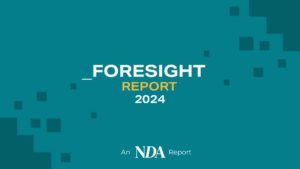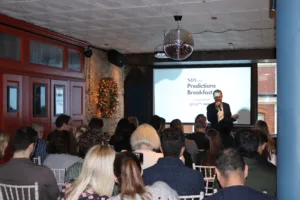As we enter H2, NDA asked a number of industry figures about what have been the key developments so far in 2021 and what’s to come.
This time it’s Aaron McKee, Chief Technology Officer at Blis
As we enter the second half of 2021 and in the wake of increasing privacy restrictions, advertisers are still pondering how they will continue to target their audiences at scale. This comes in the wake of Apple and Google enhancing their privacy stance through the introduction of the App Tracking Transparency (ATT) framework and the removal of third party cookies coming in 2022, respectively. These updates further restrict the free flow of data, but do so without truly providing consumers with sufficient transparency or choice with their data.
The turning tide of privacy
While steps towards consumer privacy are positive, the advancements from these tech giants are being lauded as anti-competitive by many and when we take a closer look, it’s easy to see why.
Apple’s ATT framework requires publishers to gain permission from consumers to collect their app data for tracking, however Apple is permitted to serve targeted ads by default. Furthermore, Apple’s new ad units also support richer ad effectiveness measurements than is possible elsewhere on their platform. Equally, Google has said it will not support universal IDs in its tech stack, but the Google identifier is itself a universal ID.
When it comes to universal IDs, advertisers are finding new ways to identify users. Some buyers are now starting to use consumer email addresses and other login details as the basis for new universal IDs. While these details would be rehashed and anonymised, they are much more indelible and fixed than the third-party cookies and advertising identifiers that they replace, which were easy to clear or reset. This may result in some finding the ability to opt-out of certain universal IDs much more opaque and difficult.
That’s why we believe the way forward is for the industry to focus on finding long-term solutions instead of short term fixes.
The way forward: Dynamic audiences
Despite the restrictive nature of data regulation and privacy frameworks introduced by the likes of Apple and Google, there is a significant amount of opted-in data available for advertisers to use. The challenge for advertisers will be achieving effective targeting at scale with the new, smaller percentage of consented data.
At Blis, we take highly accurate, opted-in location data including – how people move around public places in the real world – and combine it with dozens of different aggregated and anonymised behavioural signals to build a multi-dimensional picture of an audience. We do this by comparing what makes them unique to other brand, local, regional or national cohorts to identify differences in content consumption, sociodemographics, shopping behaviours and countless other anonymous factors. We then compare media buying opportunities against these factors to find precise, differentiated audiences – all without requiring cookies, email addresses or any other identifier or personal data. This new form of cohort- oriented targeting is something all advertisers will need to invest in to be able to target effectively in a cookieless future.
For the past decade, the industry focus has been on achieving one-to-one marketing, relying on cookies and IDs to reach consumers with tailored and personalised advertising. Now, this new privacy-first era will require the industry to move away from its previous reliance on personal data and choose a new way forward.
Ultimately, it comes down to a limited set of choices: go with contextual targeting and get high scale and low performance, go with universal IDs and get low scale and good performance or go with a cohort-oriented solution and get good scale and good performance.
The bottom line: for consumer privacy to be truly respected, the entire industry needs to unite and embrace the changes that consumers and regulators are demanding.
Blis is a client of Bluestripe Communications, owned by Bluestripe Group, the owner of NDA.









